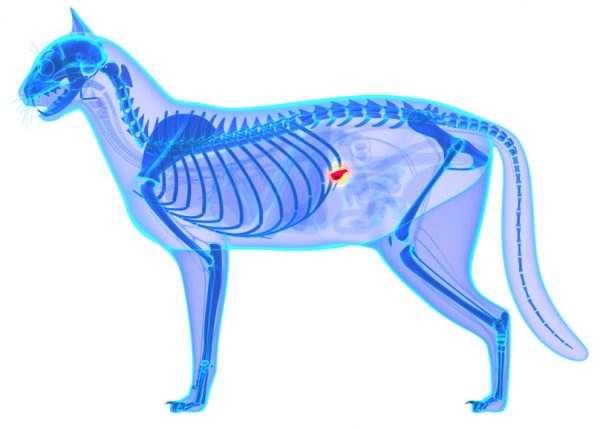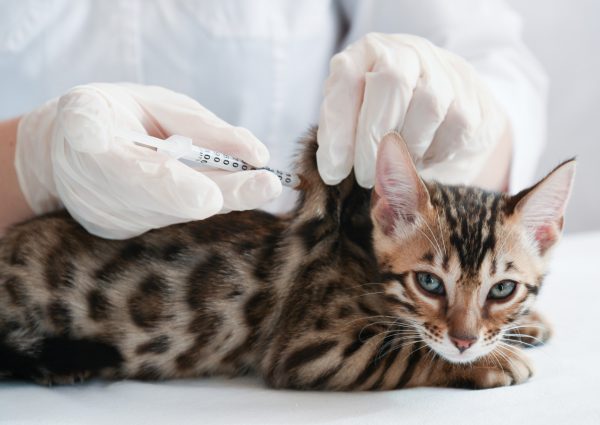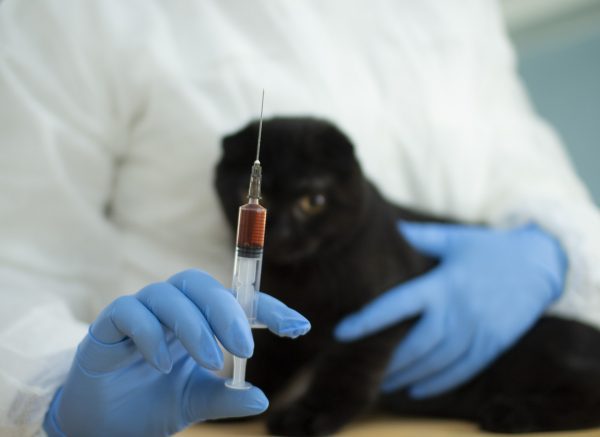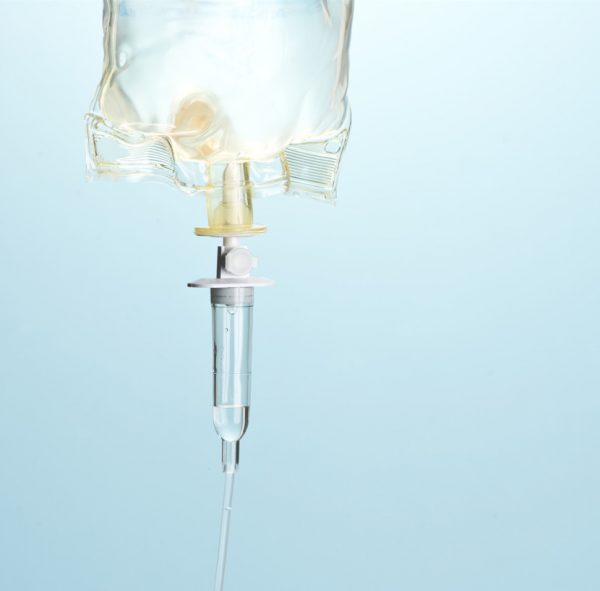What Is Feline Pancreatitis?
Although pancreatitis in cats was once thought to be uncommon, experts now believe that the disease is underdiagnosed due to its vague symptoms and testing difficulties. A recent study suggests that up to 40% of cats may be affected by feline pancreatitis. Thankfully, diagnostic testing has also improved due to the development of more precise tests.
Pancreatitis occurs when a feline’s pancreas becomes inflamed. The pancreas is a small organ located between a cat’s left kidney and intestinal tract. Although small, the pancreas performs two important functions—an endocrine function and an exocrine function.

The endocrine cells of the pancreas produce several hormones, including two that regulate blood sugar (glucagon and insulin). Diabetes mellitus is a common disorder of the endocrine pancreas. In this disease, decreased levels of insulin lead to increased blood sugar levels.
The exocrine glands in the pancreas produce enzymes that help with the digestion of fats, proteins, and carbohydrates. When the pancreas is functioning normally, these enzymes travel from the pancreas to the cat’s small intestine where they become activated. However, if these enzymes activate prematurely and leak into the pancreas, the pancreas and the surrounding tissue become inflamed—thereby causing cat pancreatitis.
Chronic pancreatitis in cats occurs when the pancreatic tissue is permanently changed, while acute pancreatitis can be reversed before permanent damage is caused. Acute pancreatitis is typically more severe and can quickly result in shock and death. Chronic pancreatitis is much more common in cats.
Symptoms of Pancreatitis in Cats
The symptoms of pancreatitis in cats are quite vague and can be indicators of many other ailments, such as chronic kidney disease. The most common indicators of pancreatitis include:
- Lethargy
- Dehydration
- Decreased appetite
- Weight loss
Less common signs of feline pancreatitis include nausea, vomiting, abdominal pain, diarrhea, and fever. Complicating the issue is that pancreatitis is often associated with other diseases, such as inflammatory bowel disease (IBD), liver or gallbladder disease, diabetes mellitus, hepatic lipidosis, and cholangitis.

What Causes Pancreatitis in Cats?
Approximately 95% of feline pancreatitis cases do not have a clear cause, which is called idiopathic pancreatitis. (Idiopathic is a fancy term meaning “no known cause.”) However, the disease often occurs in conjunction with pancreatic cancer, IBD, and diabetes. Other potential causes linked to pancreatitis include a physical injury to the pancreas, parasitic infections, infectious diseases, ingesting poison, and adverse reactions to drugs. However, because the majority of cases have an unknown cause, there is not much a pet owner can do to prevent the disease.
Diagnosing Pancreatitis in Cats
Diagnosing pancreatitis in cats is tricky because many of the clinical signs accompanying the disease are seen in other illnesses. In most cases, the vet will use the following diagnostic tools to diagnose pancreatitis:
- Complete blood count and chemistry panel
- X-rays (to rule out other common causes of decreased appetite and vomiting, such as intestinal blockages)
- Ultrasound to detect inflammation of the pancreas and the surrounding areas, enlargement of the pancreas, and increased fluid
The most specific blood test for feline pancreatitis is the pancreatic lipase immunoreactivity test (fPLI), which tests for a marker specific to the pancreas. The most definitive test is called the Spec fPL and requires blood to be sent to an outside lab. A faster version of this test (called the SNAP fPL) can be performed in a vet’s office. However, even these tests can miss mild or chronic cases of pancreatitis. However, these tests are effective at diagnosing acute pancreatitis, which is the more serious form of the disease.

Pancreatitis in Cats Treatment
The treatment for feline pancreatitis has four primary goals: managing dehydration, nausea, pain, and nutrition. The extent of treatment will depend on the severity of the case. Very mild cases might be treated at home, but most cases will require hospitalization. The goal is to keep the cat hydrated, nourished, and comfortable while giving the pancreas time to rest and “reset.”
-

IV fluid therapy treats dehydration in cats with pancreatitis. Dehydration Management. Dehydration is quite common in cats with pancreatitis. In severe or acute cases, the cat will receive IV fluid therapy. With less severe cases, subcutaneous fluids (fluids given under the skin) can be provided in the vet’s office or at home.
- Nausea Management. Cats with pancreatitis usually have a reduced appetite, which is typically caused by nausea. Therefore, prescribing an anti-nausea medication (such as Cerenia) can help get cats back to eating. Cerenia has the added bonus of also decreasing abdominal pain.
- Pain Management. If Cerenia is not enough to manage the pain associated with acute pancreatitis, a vet may prescribe stronger pain medication. Possible options include fentanyl transdermal patches with intravenous buprenorphine. Cats with chronic pancreatitis may be also be prescribed fentanyl patches, oral butorphanol, or tramadol.
- Nutrition Management. It is important that cats with pancreatitis go back to eating as quickly as possible. If a cat doesn’t start to eat after receiving anti-nausea and pain medications, an appetite stimulant (such as mirtazapine) may be prescribed. If a feline still will not eat on its own, the vet may insert a feeding tube that allows the vet to deliver food directly to the cat’s stomach. When a cat goes too long without eating, it can experience hepatic lipidosis—a potentially fatal liver disease. The vet will most likely give the cat B12 injection as many felines who experience pancreatitis also have a B12 deficiency.
The recovery time for more serious cases of feline pancreatitis is typically two to four days of hospitalization. During this time, IV fluids and medications are given, and food is gradually reintroduced. There are currently no special dietary recommendations for cats with chronic pancreatitis. However, the vet may recommend a special diet if the cat is also experiencing other diseases, such as diabetes or IBD.
Pancreatitis in Cats Life Expectancy
The cat pancreatitis survival rate depends on the severity of the disease and the presence of comorbidities. Felines with mild or moderate cases usually recover quite well—although they may be prone to repeated bouts of the disease. However, cats with acute pancreatitis have a poor prognosis as the disease often proves fatal.




